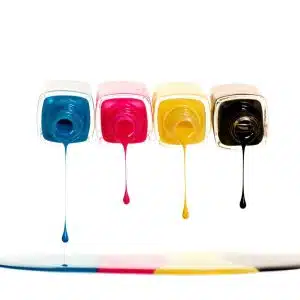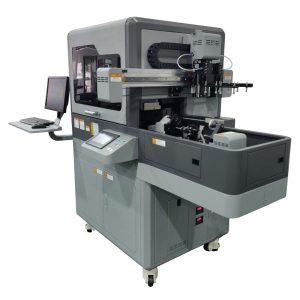What inks can be used for printing on silicone swimming caps?
- To print on silicone swimming caps, you’ll need silicone inks that can be pad (tampon) or screen printed.
- Boston Industrial Solutions, Inc. has two types of silicone inks that are ideal for pad or screen printing onto silicone swimming caps. The SE silicone inks and the DC silicone inks.
- Simply mix the silicone ink with the catalyst and thinner. Screen Print or pad print on you the swimming cap. Cure your printed product using a dryer or heat tunnel. It is that simple.
What is the difference between the Natron™ DC & SE Silicone inks?
- The SE silicone inks uses heat to dry and cure on to the silicone product. The DC silicone inks air dry and cure onto any silicone product with or without heat. DC silicone inks, are the only inks designed to air dry and cure onto any silicone product. The DC silicone ink with air cure onto silicone within 72hrs.
The mixed Silicone ink is dying too fast when screen printing what should I do?
-
There are several reasons why mixed silicone ink is drying too fast. The room printing conditions is one of the reasons. How you mix the silicone ink is the other. We’ll address how to mix the silicone inks. Follow the recommended SE silicone ink / DC silicone ink mixing ratios. Also, ensure that you are using the correct solvent/thinner. We offer several thinners and catalyst which impact how the ink drys.
- Try slower evaporating solvent/thinners from your silicone ink supplier. Boston Industrial solutions, Inc. offers several thinners for silicone screen printing and pad printing.
- For screen printing make sure that you are using the SE-TRM solvent. You may also want to consider using the LS-CT catalyst instead of the SE-CT catalyst.
How can I avoid silicone ink wastage and spillage?
- Mix only what you need. Mix silicone inks in small batches. This ensures that you have enough ink for the pad or screen printing job without any wastage.
-
Edged metal containers are a common reason why printers cannot get all the inks out. We offer straight smooth containers designed to allow all silicone ink to flow out. Our inks also have perfect viscosity, combined with our cans, printers use up-to 99.3% of the ink. Our containers are designed to make sure that you use every drop of ink in the container.
What could cause Silicone inks not to picked up by silicone pad from the plate?
- The printing pad might be damaged. The pad could also have debris or unclean causing the ink not to stick to it. Please ensure your printing pad is clean before printing.
- The plate may be too deep – use a shallow plate for an easy ink pick.
I am having silicone printing ink transfer issues from the pad, what could be the issue?
- Make sure the pad is hard enough for a complete silicone ink pick up and a complete ink transfer. Too much pressure can cause distortion and too little pressure will lead to an incomplete print.
- The shape of the pad which does not fit the print can also cause a contour mismatch. Work closely with your pad manufacturer to ensure pads are made to fit the print.
- Damaged or unclean pad can also cause transfer issues – always ensure the pad is clean before any transfer.









